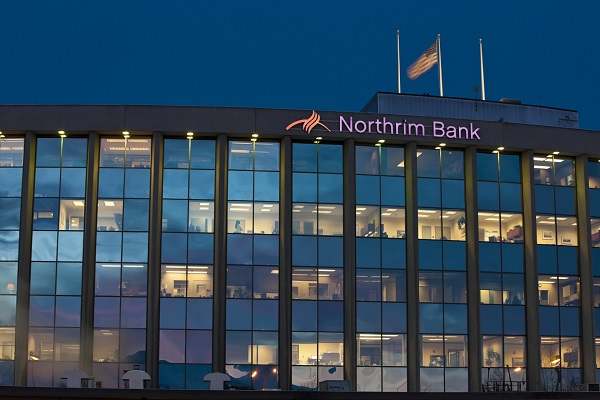Northrim Bank in Alaska Chooses Datrium, Start-Up Just Out of Stealth Mode
For server-flash storage system
This is a Press Release edited by StorageNewsletter.com on August 3, 2015 at 3:03 pmBenjamin Craig, EVP and CIO of Northrim Bank, AK, knew he had a storage problem. He also knew how he wanted to fix it, but until now the solution didn’t exist.
Northrim, one of three publicly traded/publicly-held companies based in Alaska, has had to master BC to deal with both extreme distance and nature. In 2012, the bank experienced two Level-1 disaster events, forcing them to enact contingency strategies only four months after the completion of its commissioned virtual infrastructure. Thanks in large part to vSphere and shared storage, they were able to resume production operations in less than five minutes at their secondary datacenter 350 miles away.
Northrim’s hybrid SAN arrays have been part of that success, but as needs grew, those arrays could only scale by purchasing expensive controller and cache upgrades. And because many of the bank’s virtual servers and desktops have very different performance and capacity needs, they had to purchase workload-specific SANs, as their only alternative was to pay a heavy price for over-provisioning. This path was leading to too many arrays, and too much administrative burden, at too high a price.
Before investing in yet another SAN, the bank investigated emerging server-side caching vendors to offload the SAN and optimize speed within host clusters.
“While beneficial in some ways, they ultimately created yet another independent layer to manage and troubleshoot,” Craig said.
The team also evaluated hyperconverged solutions that scaled storage performance and capacity within server computing resources, but “the proportional scale of storage and compute resources often didn’t fit well, and the cost of hyper-convergence was higher” than traditional server and storage infrastructure.
“Datrium, Inc. represents the right kind of next step, and we haven’t seen it from anyone else,” he continued. “In short, Datrium leverages the power of both VMware host hardware and shared storage together to simplify scaling. The result is blisteringly fast IO that can be dynamically upgraded by simply adding more commodity solid- state drives and assigning more vSphere logical processor cores, at minimal additional cost. We can run completely from flash before traversing the network for half the price of a hybrid array. Moreover, Datrium is VM-centric; it allows us to focus on individual protection and performance metrics per VM, aggregating shared storage into a single Datastore rather than requiring management of LUNs or other array artifacts. While this technology is still being developed, it represents a bold and necessary paradigm change in shared storage.“
Datrium, founded by expatriate senior product leadership from VMware and Data Domain / EMC, is an emerging Silicon Valley storage company just coming out of stealth mode. Its DVX product is currently in field testing at selected sites.
“When we started Datrium, we felt there had to be a better storage model for on- premise virtual infrastructure,” said Brian Biles, CEO and founder, Datrium, formerly founder of Data Domain. “What we ended up talking about didn’t look like any existing product categories.“
Unlike a SAN array, the Datrium model puts all the storage speed elements – software for RAID, clones, de-dupe and other data services, and flash for in-use data – on stateless ESX hosts, using customer-provided bring your own (BYO) commodity servers and SSDs.
Unlike hyper-converged servers, Datrium storage is designed around a highly-available network drive-enclosure appliance for at-rest data. This ensures all persistent data is off-host, so speed can be provisioned independently of capacity. Unlike server-side caching vendors, administration is VM-centric, centralized and integrated. And with Datrium, servers don’t write to other servers; they operate locally and are isolated from most neighbor noise.














 Subscribe to our free daily newsletter
Subscribe to our free daily newsletter

